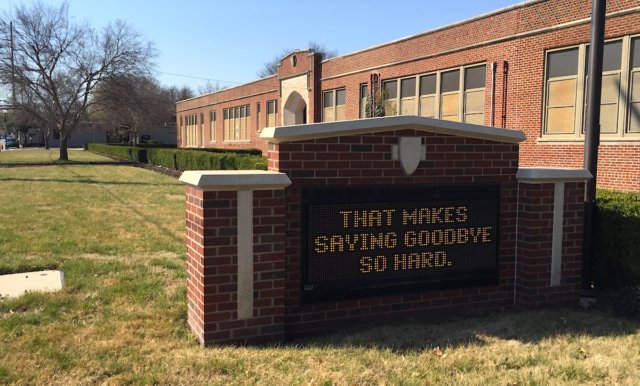

Now that Oklahoma City Public Schools’ Pathway to Greatness transformation plan has been approved, I hope we can all take a deep breath, calm ourselves down and act deliberatively in order to improve our schools.
Throughout the P2G planning process, I found myself changing my appraisal of the school closure plan on a daily basis, often after listening to the arguments of district leaders and members of the community who I respect. Too often, however, I would then read between the lines of their positions, and switch sides during my next conversation on the issue. I can now say with certainty, however, that most closures and the concrete “trade-ups” that they will allow are necessary.
At the same time, I also believe OKCPS overreached. The question is whether the possible missteps that went along with the P2G process will undermine further progress, or whether we can unite and build on the plan’s strengths.
A recent analysis of similar, ambitious school closures around the country lends support to the common sense assumption that teaching and learning will decline next year in OKCPS. Closing more than a dozen schools will increase the “churn,” the transiency and unpredictability that undermines the consistency required in urban education. But will this transitional period prompt a new exodus of patrons from the district, or will the OKCPS suffer a necessary and temporary downturn that sets the stage for future growth?
Take time to do it right
I readily admit that teaching in and working with an urban school district has made me more risk-adverse. Throughout my classroom years, my schools would improve incrementally and then an ill-conceived and/or rushed policy would be imposed. Hard-earned gains would be wiped out by policy gambles which most teachers assumed were doomed to fail. We would respond with the classic education-sector mantra: “This too will pass.” Eventually we’d get back to work, making small improvements, until another top-down fiasco would be mandated.
That leads to the P2G logic that is most upsetting. Over the last generation, all types of education leaders have recited the same affirmation: “Our kids don’t have time to wait.” We supposedly need immediate, dramatic, transformational change to “rip the Band-Aid off” and reinvent schooling. This rhetoric makes me long for the 1990s when such soundbites could be countered with realism: “If you don’t have time to do it right the first time, when will you have time to do it over?”
It is enough of a challenge for OKCPS to close schools quickly and redirect resources so that all remaining elementary schools have counselors, librarians, music teachers, art teachers and physical education teachers. In my opinion, however, the closures should not have been used as an opportunity to adopt a range of new initiatives, such as replacing all (not some) mid-highs, rebanding elementary and middle school grades, dramatically expanding magnet school applications, and adopting a new, cheaper version of the school transformation process that has a long record of failure despite being generously funded.
Public support must be built for success
In addition to advancing other, opposing agendas, the P2G plan seeks to implement my top three policy recommendations: prioritizing partnerships, investing in wraparound student services and emphasizing socio-economic integration.
So why am I worried?
This huge workload has a mere six-month implementation timeline. To take just one example, I would love a patient, well-planned, 21st century desegregation campaign. But I fear the reaction of patrons who also support integration and, for instance, live west of Putnam Heights or even in Nichols Hills, when they learn that their children will be sent to F.D. Moon Middle School. If we had time to build public support and meaningful programs like STEAM, such integration could be awesome. I don’t want such an opportunity to be compromised by rushed implementation.
The most problematic part of the P2G plan is the creation of large fifth through eighth grade middle schools. As we learned during and after the MAPS for Kids process, improving the highest-poverty middle schools without first bringing in a “second team” of caring adults to join the team process is probably a hopeless task. That is why MAPS tried, unsuccessfully, to break up high-challenge middle schools by creating pre-k through eighth grade schools where the elementary and middle school students were supposed to be physically separated.
The question now becomes whether these new schools will dump fifth graders into chaotic middle schools, or whether the new buildings provide a viable version of the pre-k to eighth grade schools that have produced incremental improvements in other urban districts. Regardless, priority No. 1 must be the physical and psychological safety of elementary kids who will be attending middle schools that have troubled histories.
We only have until August to pull together and make the P2G transition work. I may disagree with OKCPS Board member Carrie Coppernoll Jacobs and others over the need for rapid transformational change, but I agree with her observation that the problem was 50 years in the making and, “It is a complex problem that is gut-wrenching to fix.”
We should also agree that our kids don’t have time to wait for adults to fight out their differences over school improvement.




















